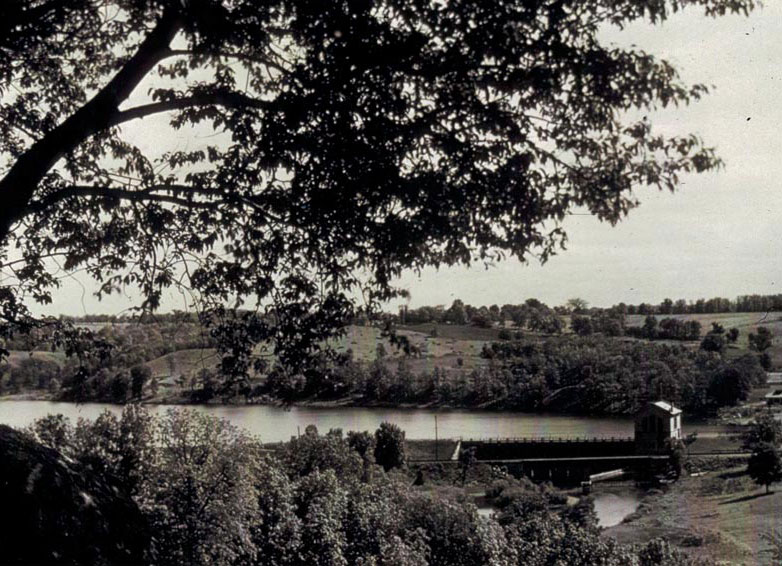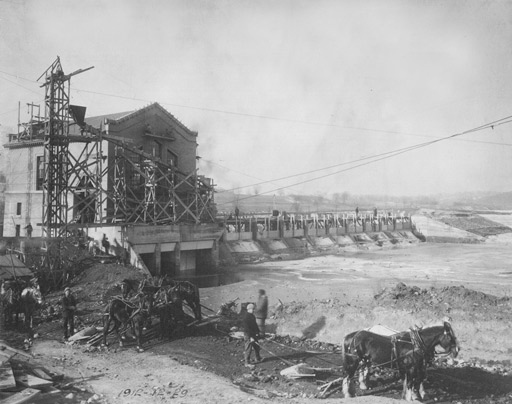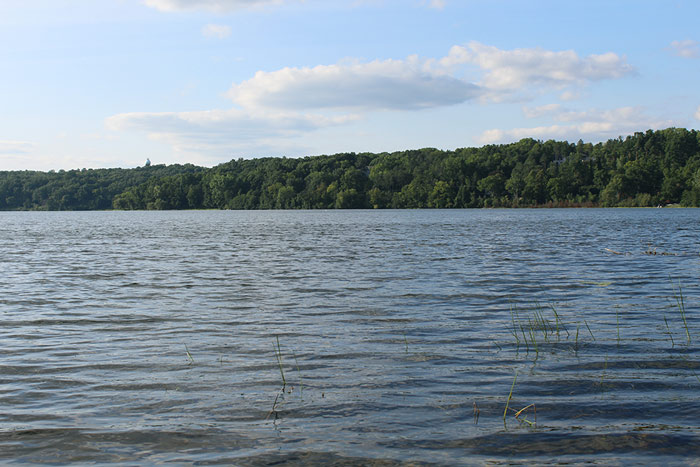“Wooded hills . . . valleys . . . beautiful water . . . an elevation that overlooks Ann Arbor and the picturesque Huron River Valley . . . artistic homes and congenial neighbors . . . privacy without seclusion . . .”

RICH HISTORY
. . .so begins a real estate brochure from the early 1930’s, proclaiming the virtues of the area now known as Barton Hills. From the Native Americans who frequented the riverbanks, to the early settlers who described the landscape as striking and appealing, to the current residents who love to come home, Barton Hills Village is a beautiful and unique place.
Native American populations along the Huron River probably peaked at the beginning of the 17th century. European settlement in Michigan began in earnest after the War of 1812, and the first sales by the Government Land Office in the Barton Hills area occurred between 1825 and 1830. In the 1870’s a farm was established by James Allen who sold the property to the Towars Wayne County Creamery in 1896. The Towar Farm raised cattle and operated a dairy until about 1912, centered in buildings (some of which still stand) located on the east side of Whitmore Lake Road. Cattle grazed on the bare hillsides too steep for farming and drank from the meandering Huron River, with only natural vistas between them and their neighbors at the settlement of Foster upstream. The Towar Farm property was acquired by Huron Farms, a development subsidiary of the Detroit Edison Company, as part of the company’s plan to construct a series of hydroelectric dams along the Huron River.
THE BARTON DAM
Barton Dam (currently owned and operated by the City of Ann Arbor) was constructed in 1912-13. Since the area that is now Barton Hills Village was too hilly for farming, Detroit Edison retained the prestigious Olmsted Engineering firm of Brookline, Massachusetts to design a residential community of gracious country homes. True to the Olmsted philosophy of creating harmony between natural and man-made features, the parcels and roadways were arranged with an artistic eye towards using the topography to best advantage. Home sites commanded unobstructed views of Barton Pond and the Huron River. Restrictions attached to each deed stipulate that all homes must be designed by a registered architect and are subject to the approval of an architectural review committee. This provision allows the community to maintain its unique ambiance. While each home has its individual personality, there is a common element of harmony with the natural surroundings that defines the character of Barton Hills.


THE BARTON DAM
Barton Dam (currently owned and operated by the City of Ann Arbor) was constructed in 1912-13. Since the area that is now Barton Hills Village was too hilly for farming, Detroit Edison retained the prestigious Olmsted Engineering firm of Brookline, Massachusetts to design a residential community of gracious country homes. True to the Olmsted philosophy of creating harmony between natural and man-made features, the parcels and roadways were arranged with an artistic eye towards using the topography to best advantage. Home sites commanded unobstructed views of Barton Pond and the Huron River. Restrictions attached to each deed stipulate that all homes must be designed by a registered architect and are subject to the approval of an architectural review committee. This provision allows the community to maintain its unique ambiance. While each home has its individual personality, there is a common element of harmony with the natural surroundings that defines the character of Barton Hills.

HURON RIVER
By the 1940’s Barton Hills had become an expensive liability for a public utility. Detroit Edison resolved the situation by offering to the residents of Barton Hills all its unsold lots, equipment and the right to collect taxes on the property already sold under a $20,000 mortgage arrangement. In exchange, the resident owners would assume responsibility for the maintenance of the community. As the residents developed experience in self-management new owners were attracted to the area, adding to the number and variety of architecturally designed homes.
Thirty years later the residents decided to seek municipal status. On December 12, 1973, Barton Hills Village became the first Home Rule village in Washtenaw County. A Board of Trustees was elected to oversee municipal services while a private corporation continued to be responsible for enforcement of the restrictive covenants, care of undeveloped land and architectural review. Residents have volunteered many years of dedicated service to the community.
Barton Hills Village remains a unique place of wooded hills, artistic homes and congenial neighbors along the picturesque Huron River.